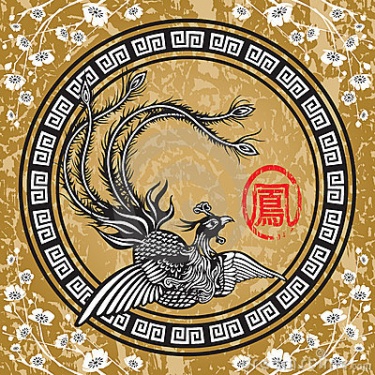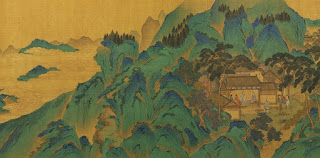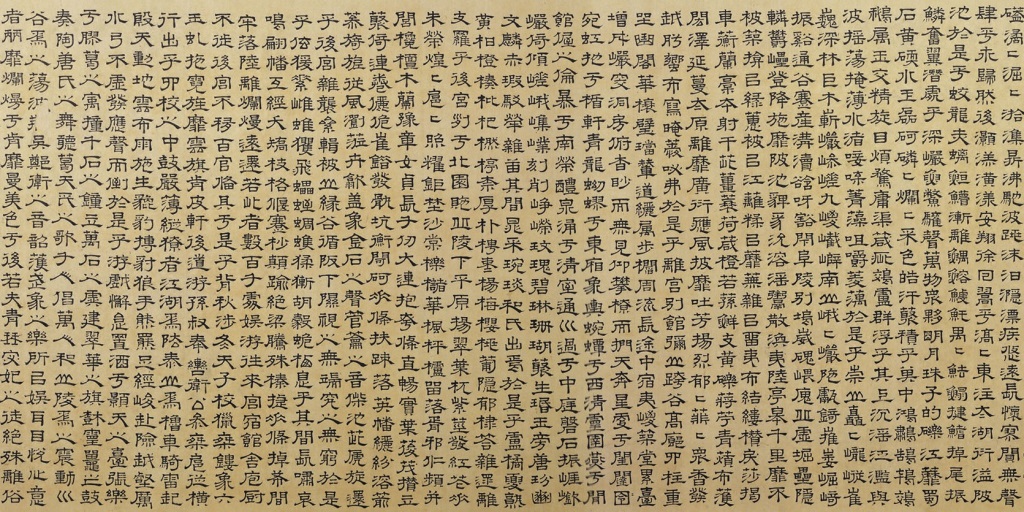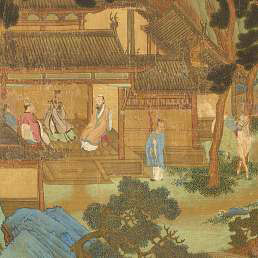
The call of the golden Feng bird
in the emperor's garden
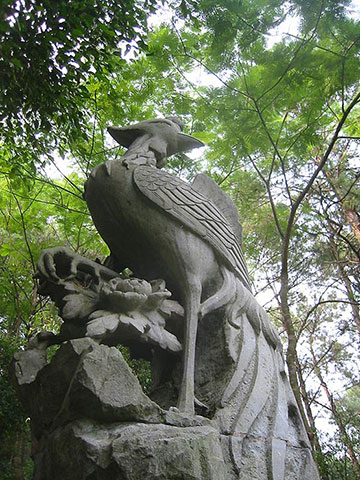
Verse 38
Huang Feng is calling in Shanglin
The colors of spring are bright
Raise the whip and make it snap
Immediately start the journey
One day the emperor was in the Shanglin Yuan (Shanglin Garden) and heard the beautiful song of the Fenghuang, or 'Red Bird of the West'. It is often compared with the Phoenix, but resembles rather the huge Roc.
Its song is
beautiful, but on this day it suddenly shrieked. The Feng is such a good omen, that even a shriek is very auspicous.
Shanglin Yuan
Hunting parks were made during the Zhou period (1066-221 BC). Perhaps the most famous was the Shanglin Park created by Qin Shi Huang as 'a symbol of the empire's worldly supremacy and cosmic grandeur'.
Images from 'Ode on Shanglin park' by Qiu Ying
One of the most famous descriptions of landscape in Chinese literature must be the Shanglin fu, 上林賦. It was written for the young Emperor Wu, who had summoned Sima to court in 137 BCE, and it describes the royal hunting park southwest of the capital Chang'an.
The poem was composed by Sima Xiangru. There is a magnificent Ming Dynasty scroll attributed to Qiu Ying (c. 1494-1552) which illustrates the poem. The detail shows the poem's three narrators in discussion.
Burton Watson translates their names as Sir Fantasy, Master No-Such and Lord Not-Real.
See
cedargallery.nl.
In the first part of the fu, Sir Fantasy and Master No-Such describe hunts in Chu and Qi; in the second part, Lord Not-Real blows them away with his description of the far-more-extensive parkland of Shanglin and the hunting and entertainment that goes on there.
From CHINESE RHYME-PROSE
Here too are precious stones: carnelians and garnets,
Amethysts, turquoises, and matrices of ore,
Chalcedony, beryl, and basalt whetstones,
Onyx and figured agate.
To the east stretch fields of gentians and fragrant orchids,
Iris, turmeric, and crow-fans,
Spikenard and sweet flag,
Selinea and angelica,
Sugar cane and ginger.
translated by Burton Watson
There is obviously some exaggeration going on in this poem, so what was Shanglin Park really like? In Mark Edward Lewis's book The Early Chinese Empires, he writes that Emperor Wu installed in it 'rare plants, animals, and rocks that he had received as tribute from distant peoples, as booty from expeditions to Central Asia, or as confiscations from private collectors. The emperor's exotica included a black rhinoceros, a white elephant, talking birds, and tropical forests.' The park contained a palace complex and an artificial lake with a statue of a whale which has recently been found during an archaeological excavation. Emperor Wu's ambitious landscape gardening would be emulated by later Chinese rulers - see for example my post here on the Song Dynasty Emperor Huizong's rock garden. And Emperor Wu lived only a century or so after the First Emperor, whose mausoleum with its rivers of mercury and terracotta army was a kind of dead equivalent to the abundant parkland described by Sima Xiangru.
 Yi Jing, Oracle of the Moon
Yi Jing, Oracle of the Moon

